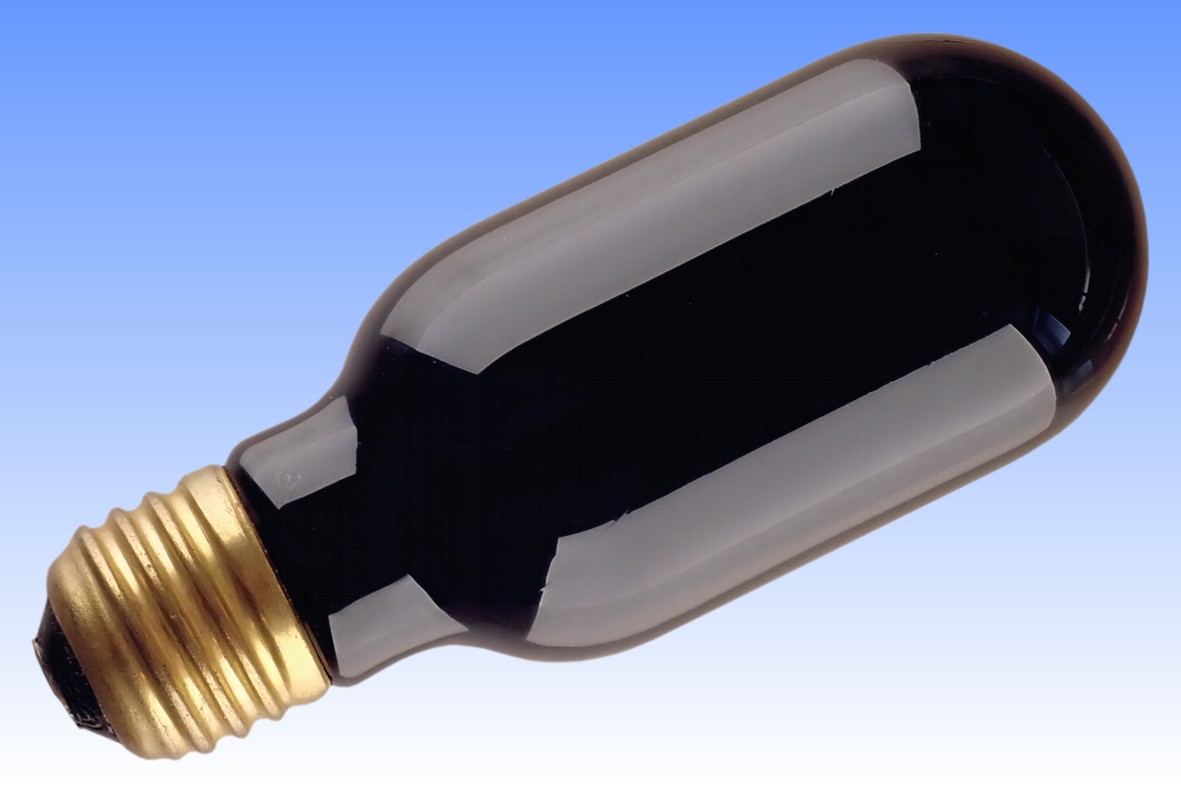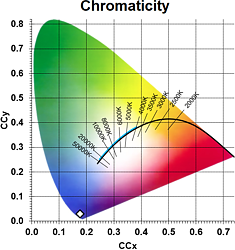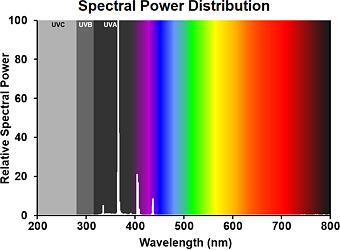
|
GE Purple-X Mercury Blacklight H100-BL4 |

One of the peacetime uses of Wood's Glass was to filter the visible light of electric lamps, transmitting the UV to allow fluorescent objects to be studied without their radiation being obscured by visible radiation. At first it was necessary to use fully enclosed luminaires to black all radiation, except the UV which could exit via a small window of this glass.
Prior to 1939 GE introduced this Purple-X lamp, employing an outer bulb made from Wood's glass and requiring no extra filter. The rest of its design is based on the general lighting A-H4 Mercury lamp, the outer bulb being enlarged from the usual T-10 to this larger T-16 size due to the great heat absorption by the black glass. The glass contains the usual iron oxide impurity found in most soft glasses, which prevents the escape of harmful UV below about 320nm. These lamps do not emit dangerous shortwave UV and are completely safe to observe when lit. Vision may appear blurred but this is not harmful, it is simply due to fluorescence of the eye which can make focussing difficult.




| Manufacturer: | General Electric Company, U.S.A. | |
| Lamp Power: | 100 Watts | |
| Lamp Current: | 0.9 Amps | |
| Lamp Voltage: | 130 Volts | |
| Cap Type: | E29s/32 | Brass + vitrite |
| Bulb Type: | T-51 | T-16 in eighths/inch |
| Bulb Finish: | Blacklight | Wood's Glass |
| Electrodes: | Tungsten Coil | Thorium strip emitter |
| Atmosphere: | Hg | Ar | Outer: Nitrogen |
| Luminous Flux: | 5 lm | |
| Luminous Efficacy: | 0.05 lm/W | |
| UV-A Flux: | 1.25 Wrad | 320-400 nm |
| UV-A Irradiance: | 300 mW/m² | @ 1m distance |
| Chromaticity Co-ordinates: | CCx: 0.175 | CCy: 0.030 |
| Rated Lifetime: | 6,000 hours | to 50% survival |
| Warm-up & Re-strike Time: | 3 minutes | 3 minutes |
| Burning Position: | Universal | |
| Overall Length: | 140 mm | 51/2 inches |
| Light Centre Length: | 87 mm | 37/16 inches |
| Factory: | Cuyahoga, NELA Park | Cleveland OH, U.S.A. |
| Date of Manufacture: | 1971 May | Date Code: 89 |
| Original Value: | US $25.95 (1973) | |

